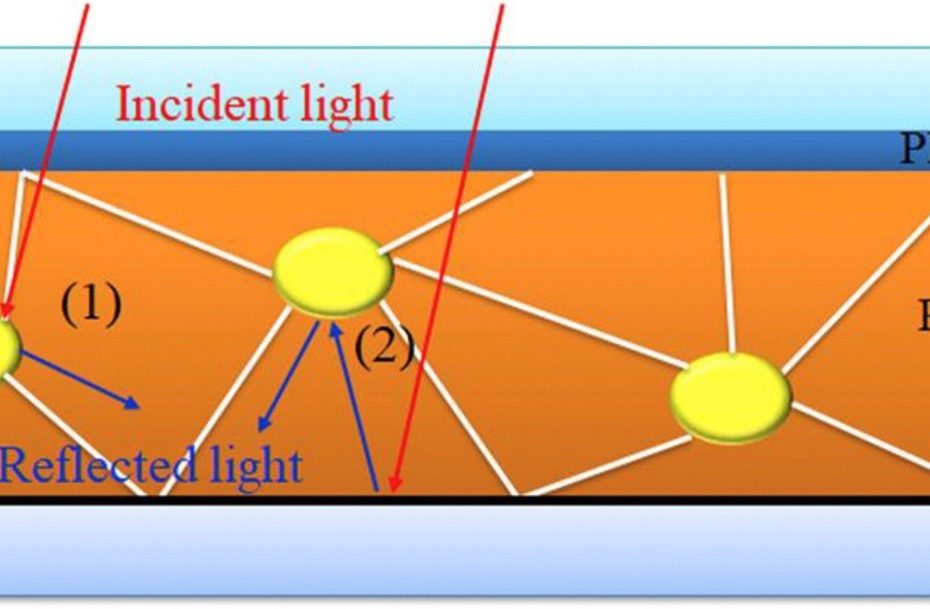A schematic of photonic phenomenon observed in perovskite solar cells due to the doping of high conducting ZnO nanoparticle in absorber layer
Perovskite solar cells have garnered much interest over the last few years due to their low cost and strong absorbance. However, barriers to commercialisation remain. Researchers at SPECIFIC have been developing ways to identify commercially viable processing routes to allow this technology to be applied at scale.
A collaboration between Henan Key Laboratory of Photovoltaic Materials and SPECIFIC IKC has produced excellent ground breaking results that have been published in the Journal of Power Sources.
Perovskite devices can be divided into two types – mesostructure and planar heterojunction structure. The planar heterojunction structure can be further divided into a regular n-i-p configuration and an inverted p-i-n configuration. The inverted p-i-n configuration is generally regarded as having the most potential for commercialisation. Our researchers have developed a new method to improve the optoelectronic properties of perovskite solar cells via bulk heterojunction structure.
Dr Sagar M. Jain from SPECIFIC explains their novel strategy of doping ZnO nanoparticles directly into the perovskite active layer to form a Perovskite-ZnO bulk heterojunction. This acts as photonic centres to scatter and absorb more light, resulting in stabilised 17.2% efficiency for the low temperature processed inverted perovskite solar cells.

The same concept is optimised for further scale up. A 25cm2 flexible solar cell module yielded efficiencies of 8.9% over 11 months. This novel method represents an important step towards commercialisation of this exciting new technology.
For further details, please see the published paper.
